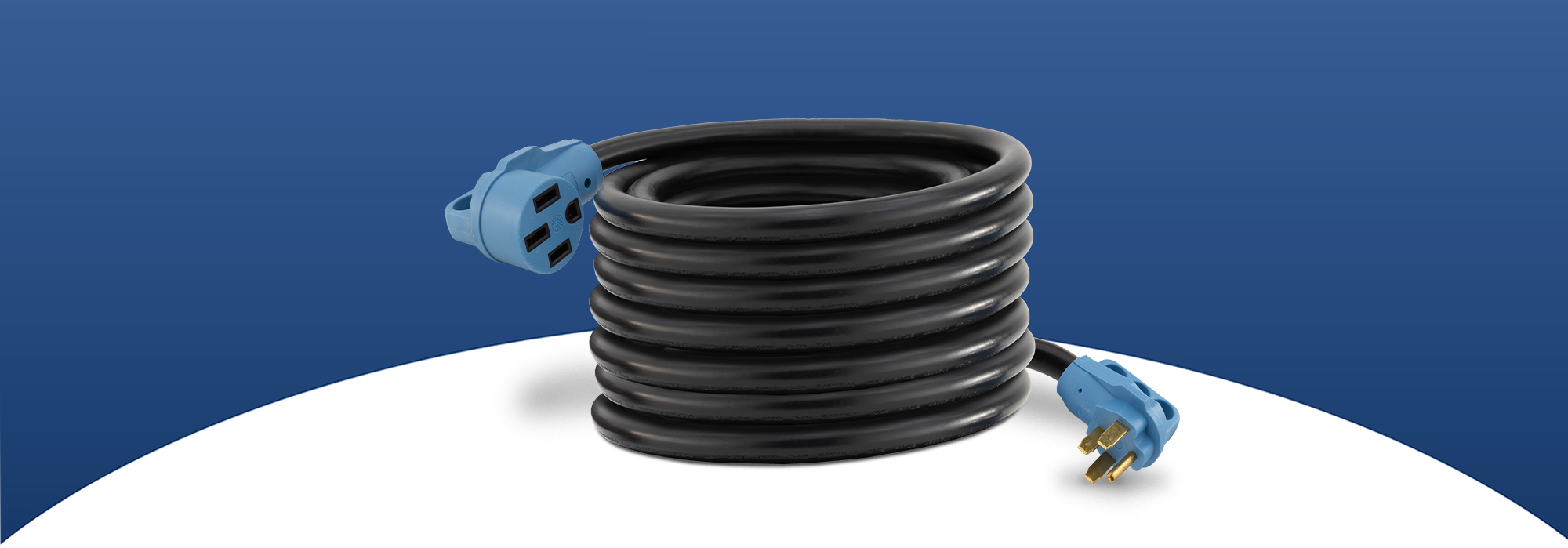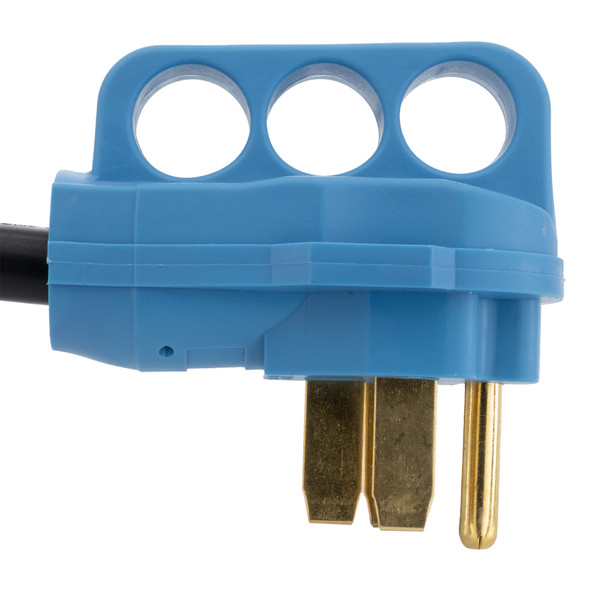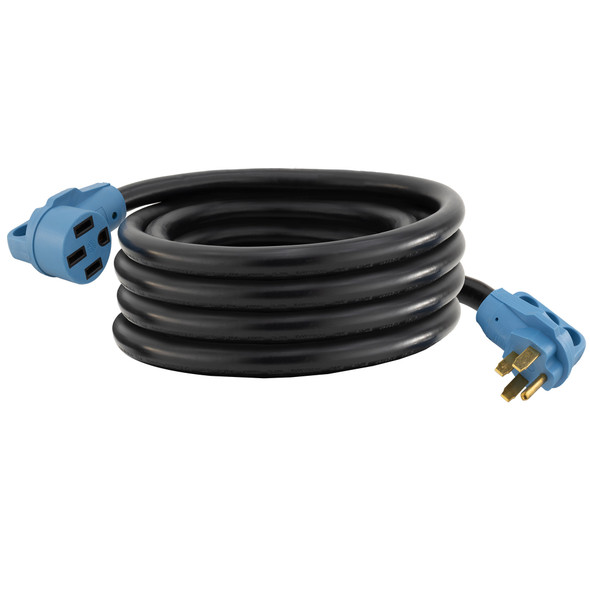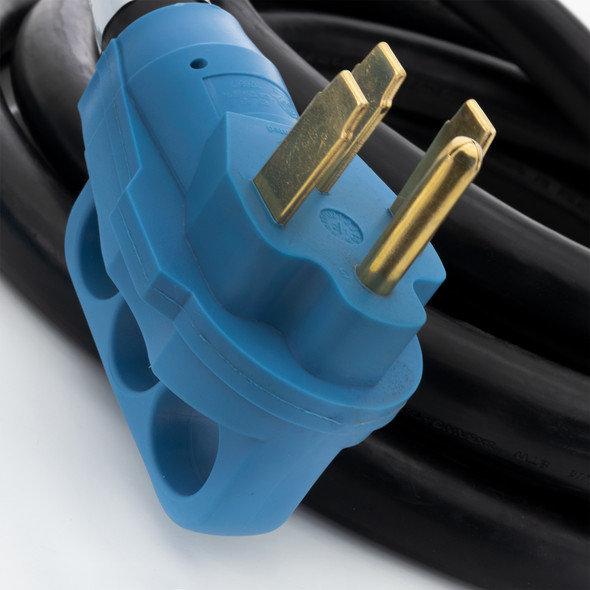When you're packing for your trip, many people make sure to bring along an extra extension cord. Doing so can mean the difference between using your fan to cool down your living area and having to keep the fan near the only available outlet (which is not facing where you want it to). Adding this convenience to your rig means not only having more range for where you can place your appliances and tools; it means having more of an ability to create the kind of environment that you want inside of your rig. With proper use and safety, you can use these handy tools to plug in your fan, grill, and more. Whether you're looking for an extension cord to run outside of stay inside, you can find it here.
Outdoor Vs. Indoor Extension Cords
The main difference between indoor and outdoor extension cords is the amount of insulation and protection for the wires. Outdoor extension cords tend to have bright orange rubber, plastic, or vinyl covers. These are the cords that you'll often find hanging in a garage or packed with the Christmas lights. Indoor extension cords, on the other hand, are less heavy-duty. These can be colored a variety of colors, however, they do not have the sturdy insulation that the outdoor version does. While both have their uses, they also both have their risks and dangers.
Outdoor extension cords are terrific for stringing up Christmas lights on the trees, connecting your electric grill to a power source, or creating your outdoor entertainment center while you're parked. This is a great use, as any outdoor electrical item is at a disadvantage; nature doesn't have electric sockets. Because they are used in the elements, though, it is specifically important to make sure they are not damaged. Check them for damages before using, as using a damaged cord could result in harm to you, your appliance, or your RV. As another tip for outdoor electrical cords, try to use as little cords outside as possible. While this might not seem like a novel idea, try not to use too many of them. Doing so could increase the risk of electrical damage, create a tangle of cords that you could trip over, and just won't look as nice.
Indoor extension cords are great for items like lamps, fans, and other smaller devices. They can allow you to move items around inside of your RV without worrying about whether or not it will be able to reach an outlet. With this ability comes risks, though. Because they are used inside, they are closer to your belongings than outdoor cords. If they should become damaged, they could cause electrical damage, shock, or even fire. They also tend to be used for longer periods of time than they should be. Using the extension cord for a long period of time can cause it to break down faster, shortening its lifespan and creating more opportunities for it to fail or cause damage. Perhaps the most important thing to consider when using indoor electrical cords is that they can be tripped over, walked on, chewed by pets, and more. All of these and other parts of daily life can cause damage to the cord. To prevent this, make sure to keep the cord out of the way and in a safe space.
Overloading The Circuit
Just like in every other electrical system, it is possible to overload the circuit with an extension cord. This occurs when the amount of electrical current that flows through the cord is higher than the rating of the cord. In many cases, the circuit breaker in the fuse box will flip if this happens, however, it can still damage the extension cord and shorten its life. To prevent this from happening and to both extend the life of the extension cord and to keep away from shock, electrical damage, and fire risk, there are several tips to follow.
First, be sure to check not only the current rating of the extension cord but also the total current rating and wattage of the appliances you are going to use with it. The total current of the appliances cannot exceed the current rating of the extension cord and the total wattage cannot exceed 3000 Watts. Taking this step is vital to keeping your RV extension cord from being overloaded and is something you should consider even before purchasing an extension cord. If you know what you are going to be using the cord for, it becomes easier to decide which extension cord to buy.
Second, don't use more than one extension cord per wall socket. While there are adaptors for wall sockets (they look like plastic bricks with multiple sockets on them) that can multiply the amount of sockets available, try not to use them. They're simply not as safe. Instead, you can use a multiway extension cord. This helps prevent electrical damage from occurring and saves you from costly repairs. If you find yourself consistently needing more sockets for your appliances, consider installing more sockets into your electrical system. This not only helps keep your system safe, it helps you by easing your frustration when looking for power for your devices.
Third, don't create extension chains. Don't attach one extension cord to another extension cord to create a longer cord. Just buy a longer cord. By creating a chain of extension cords, you are reducing the wattage capabilities of each cord, which can eventually result in a short circuit or electrical damage.
Finally, check regularly for signs of danger. These include: the smell of hot plastic; sparks or scorch marks around a socket, plug, or appliance; damaged or frayed cords; colored wire from the inside visible at the plug or outside of the insulation; fuses keep blowing for an unknown reason. If one of these is occurring, stop using the extension cord and either use an undamaged cord or use a wall socket instead.
Extension Cord Safety Tips
Roughly 3,300 home fires are caused by extension cords every year, whether from overheating or being used improperly. Most of these problems are from overloaded circuits, short circuits, damaged cords, or misused cords. To help keep you, your family, and your RV safe from electrical damage or fire, keep in mind these tips:
1. Never plug an extension cord into another extension cord. This runs the risk of overloading the circuit and potential fire or electrical damage.
2. Make sure the extension cords you are using are properly rated for their intended use, whether being used indoors or outdoors. Never use an indoor extension cord outdoors. There are several markings that can be on the extension cord, each one with a meaning that allows you to make a decision on how it will be used. The markings are as follows:
- S: Designed for general use
- T: Made from vinyl thermoplastic
- O: Oil-resistant
- W: Rated for outdoor use
- P: Parallel wire construction (air conditioner cords and household extension cords)
- E: Made from TPE
- J: Standard 300 voltage insulation
3. Never use a three-pronged extension cord in outlets that only have two slots. Do not cut off the third prong, as this is the grounding prong and doing so can result in electrical shock. Try and use only the three-pronged cords or polarized cords.
4. Only use extension cords that have been approved by an independent testing laboratory such as UL, SA, and ETL
5. Always use GFCI (Ground-Fault Circuit Interrupter) protection when using an extension cord outdoors. This means only plugging the cord into an outlet that has a "Test" and a "Reset" button on it.
6. Inspect cords for damage before using them, whether used inside or outside. Discard damaged extension cords.
7. Do not overload the extension cord
8. Do not allow the cord to run through water or snow if used outside.
9. Do not run an extension cord through the walls, doorways, ceilings, or floors, as you would with traditional wiring. Extension cords are meant to be a temporary electrical solution, not a permanent one. Making it into a permanent solution can cause it to fail and create damage.
10. Do not use an extension cord for more than one appliance and make sure that the cord is rated for the tool you are using.
11. Install additional outlets if you need them or are consistently using an extension cord in an area.
12. Be sure to use a cord that is the correct length so that you are not tripping over them or stretching the cord too much.
13. If you are not using the cord, unplug it and store it indoors.












